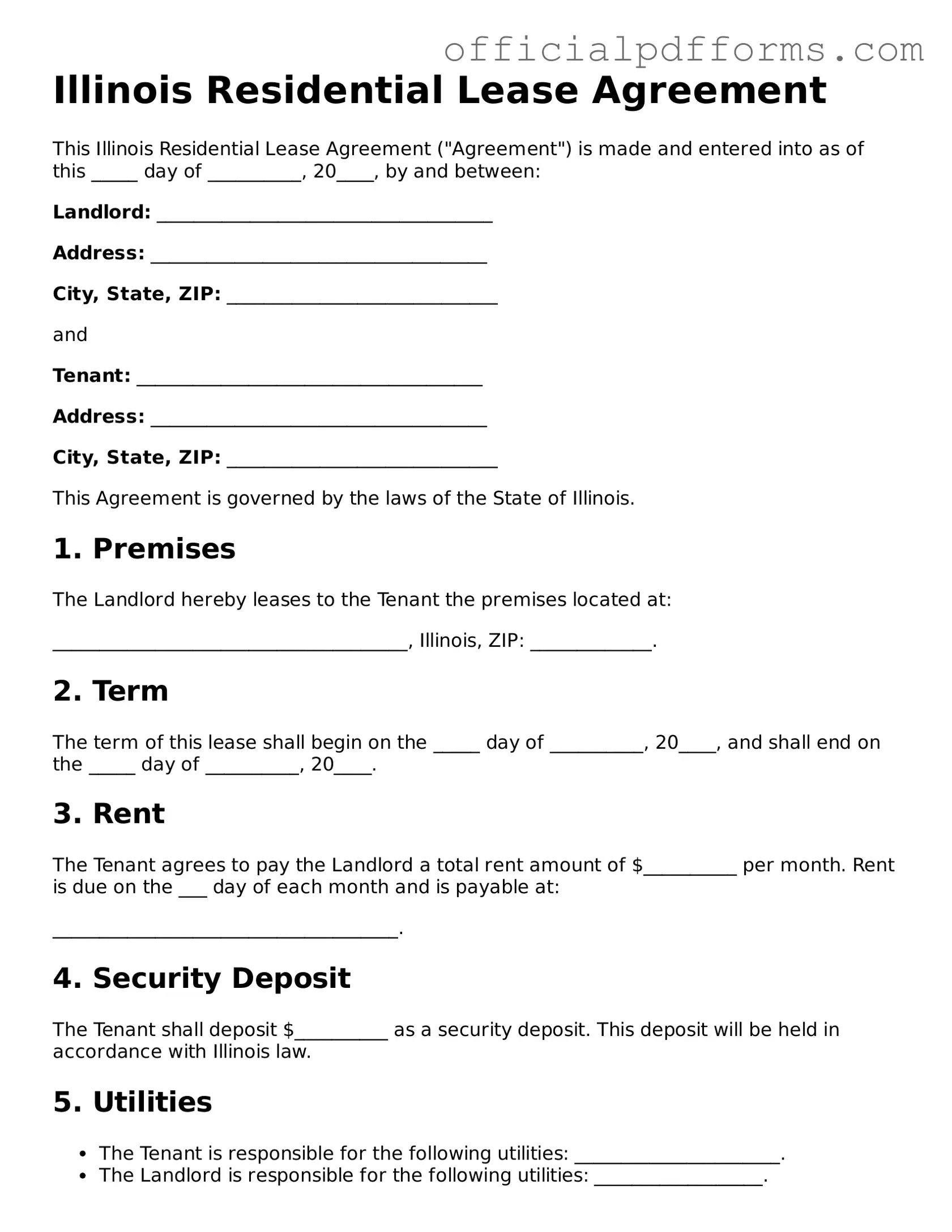Printable Illinois Residential Lease Agreement Template
The Illinois Residential Lease Agreement is a legal document that outlines the terms and conditions between a landlord and tenant for renting residential property. This form serves to protect the rights of both parties and provides clarity on rental obligations. Ensure you understand its components and fill it out correctly by clicking the button below.
Access Form Online
